
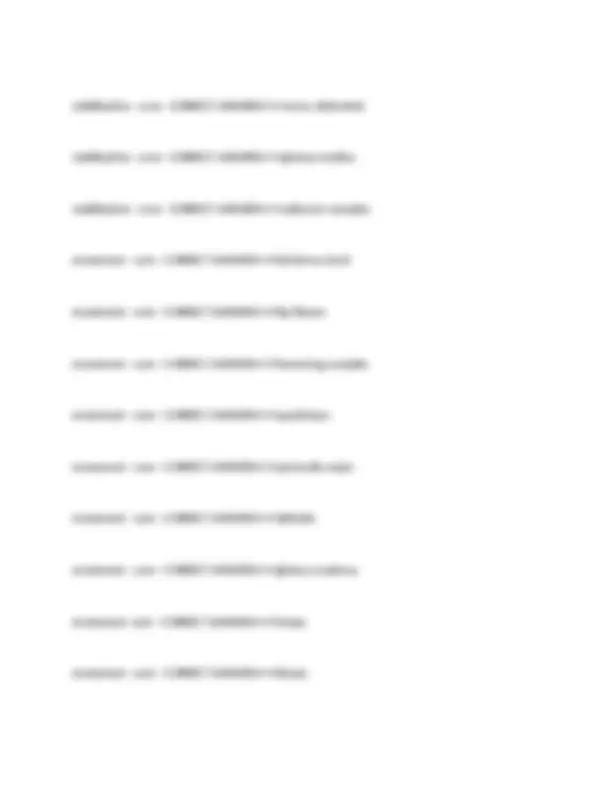
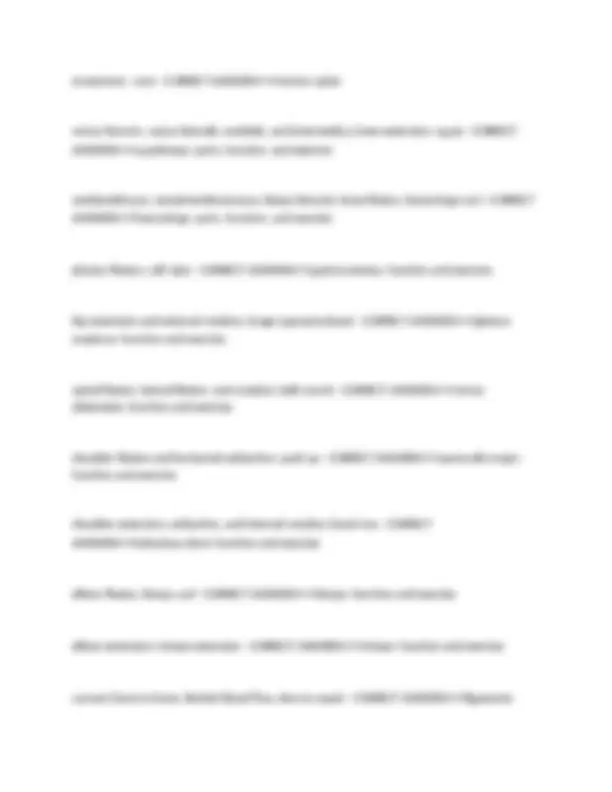
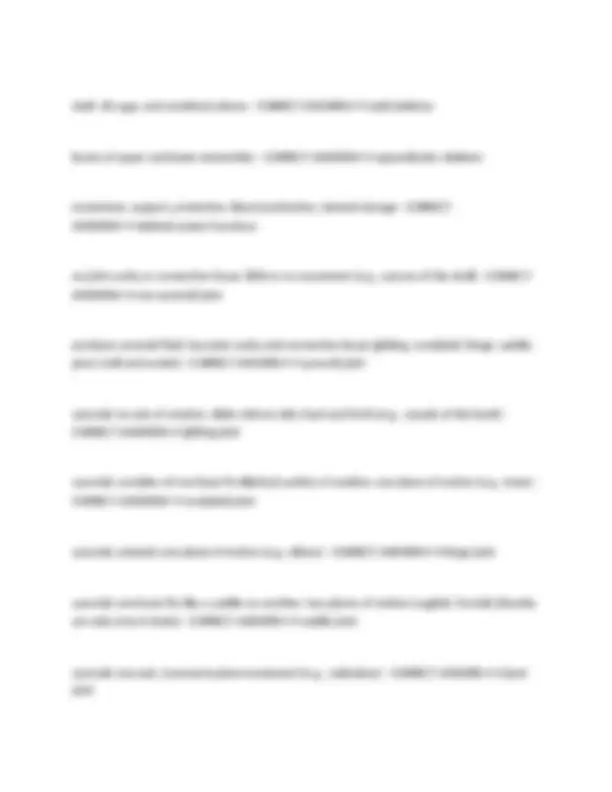
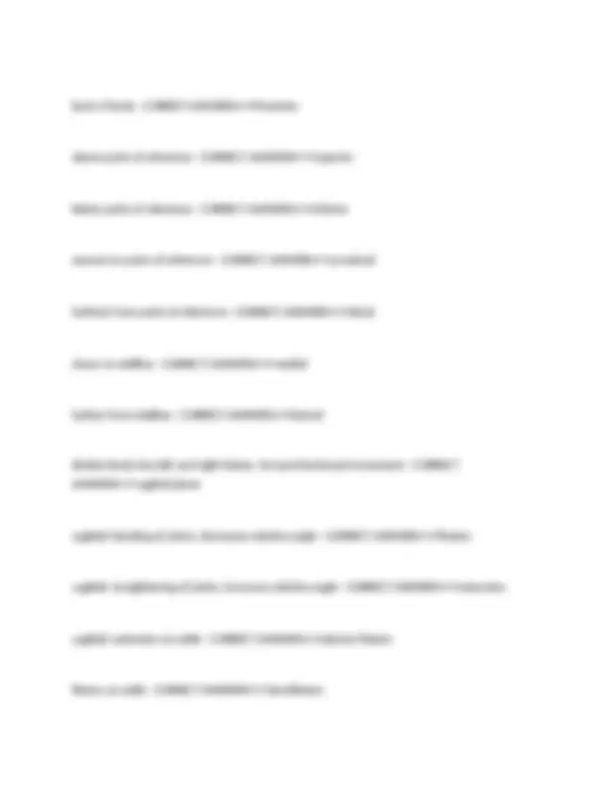
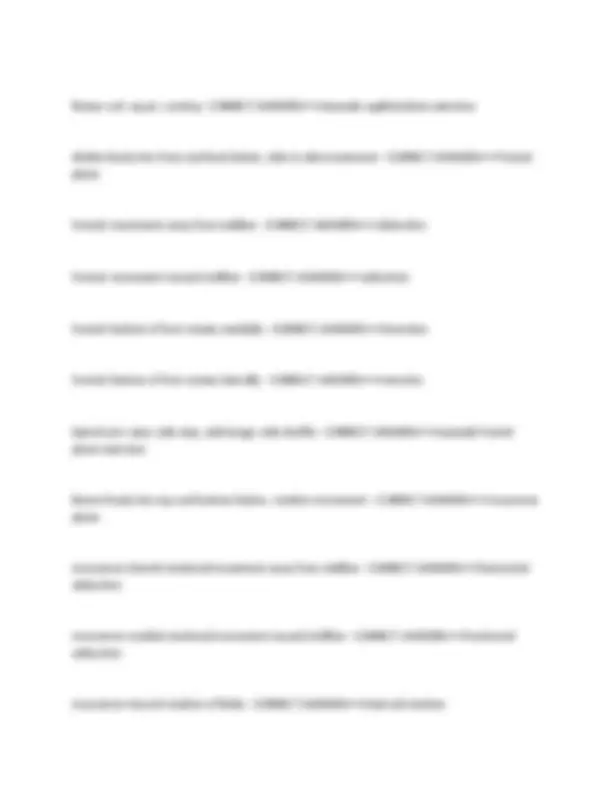
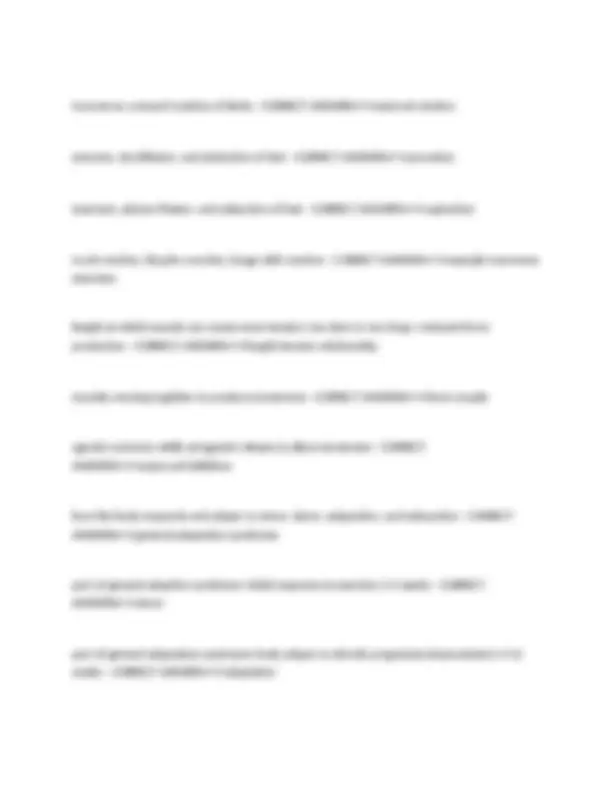
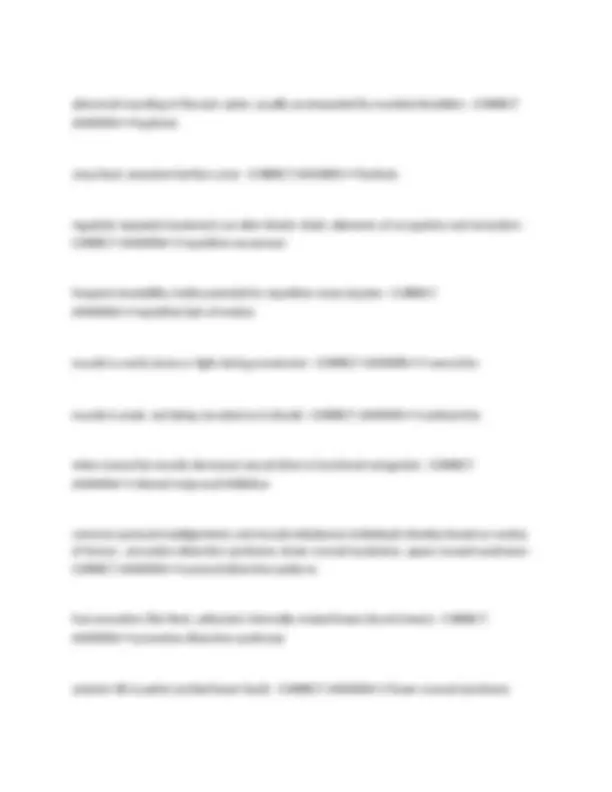
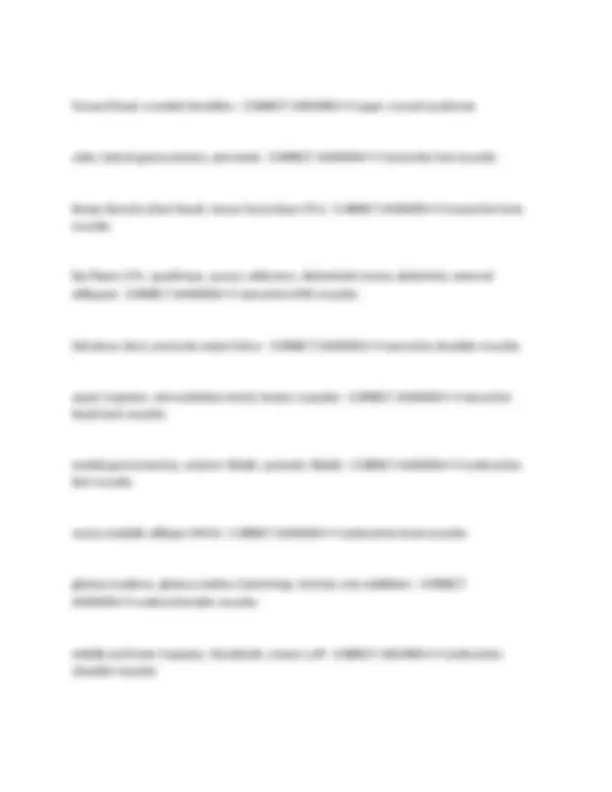
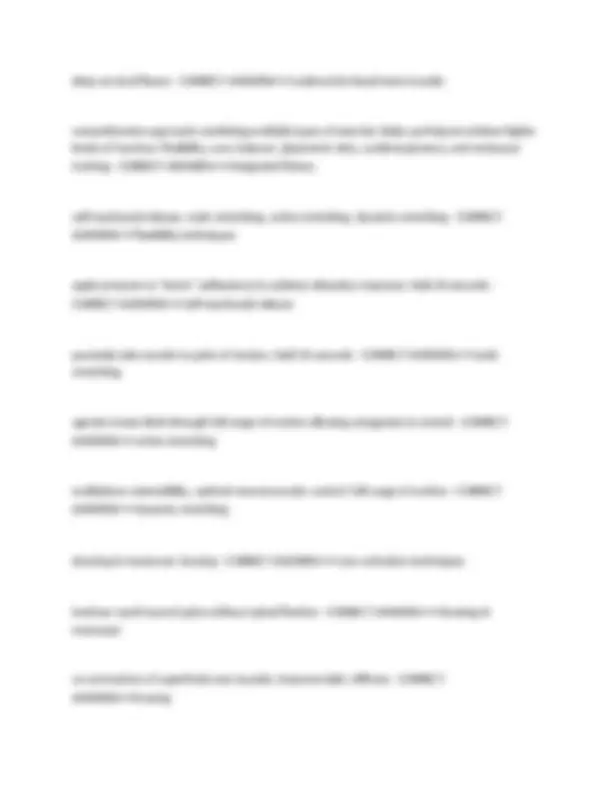
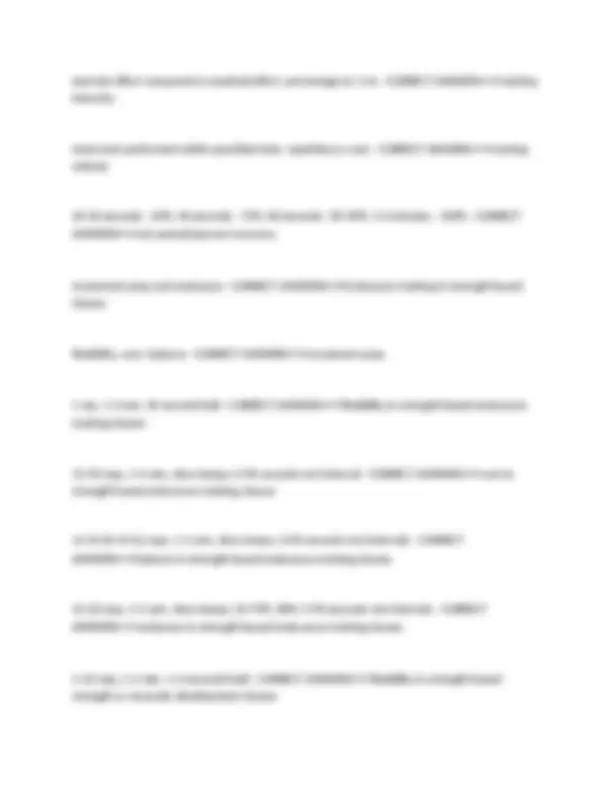
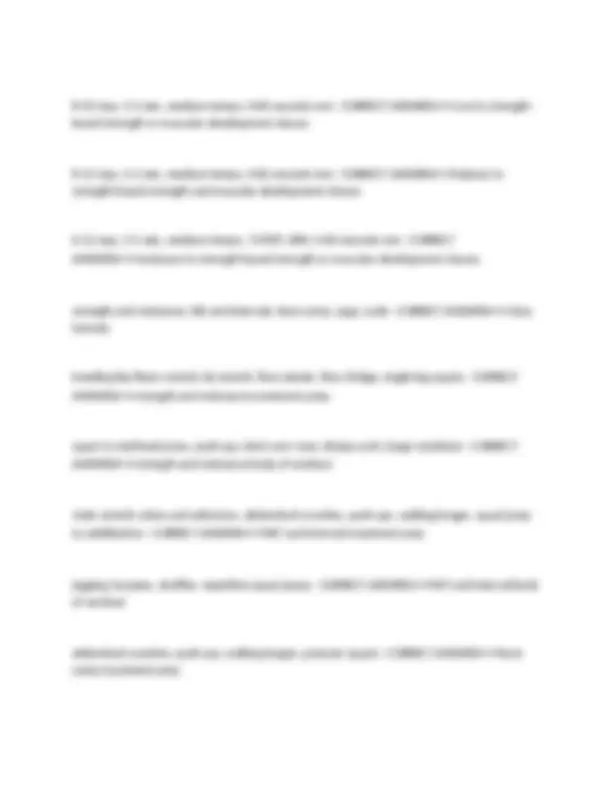
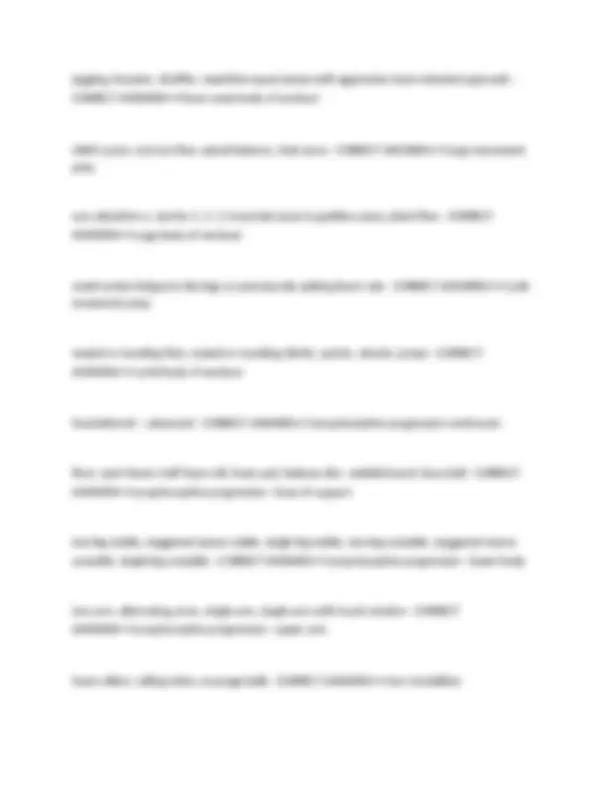
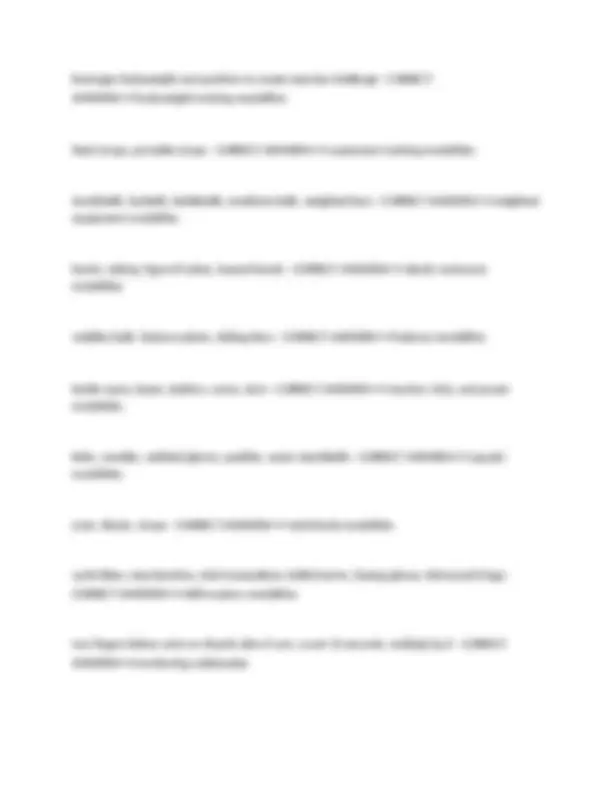
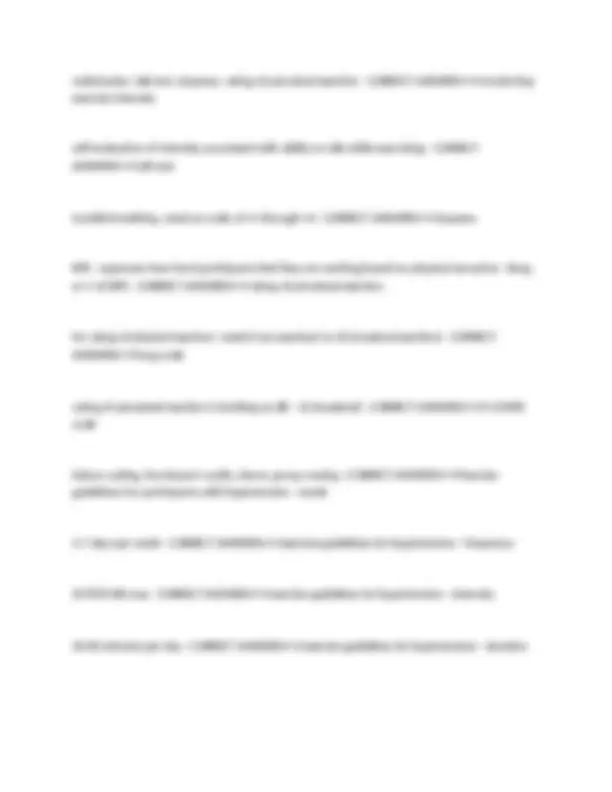
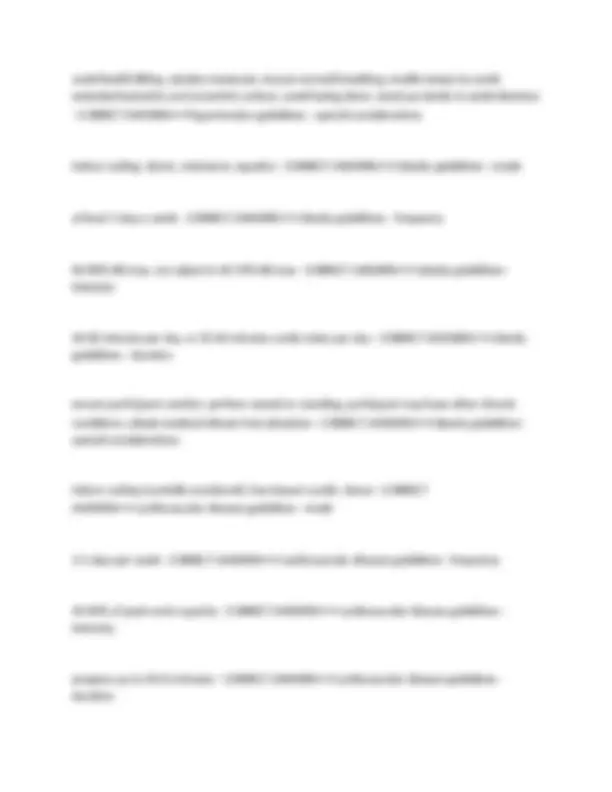
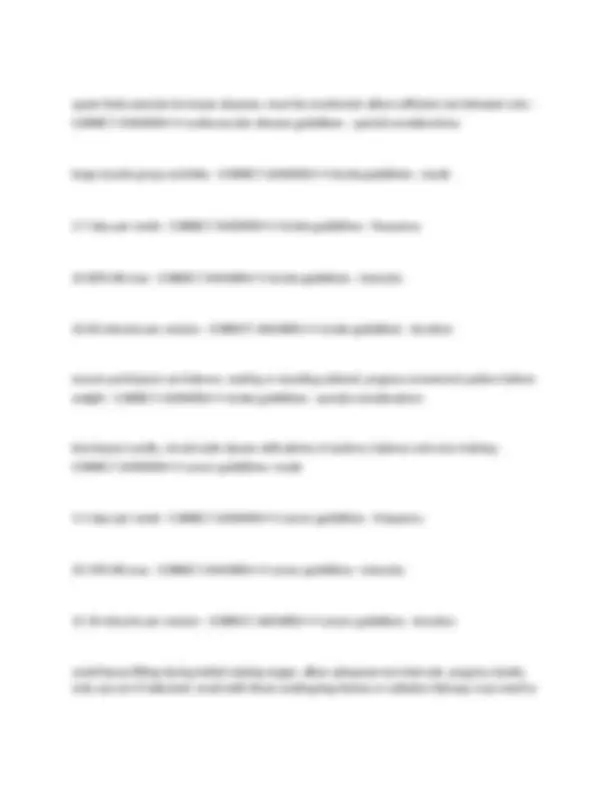
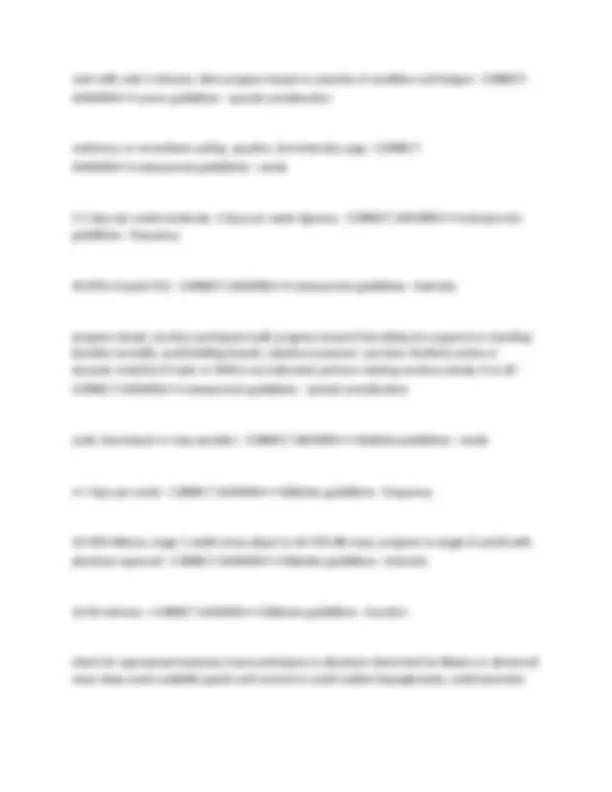
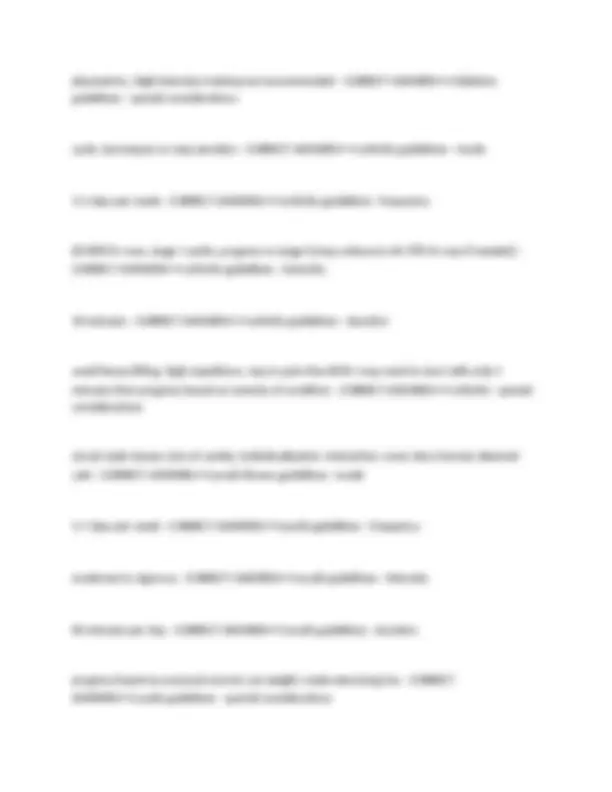
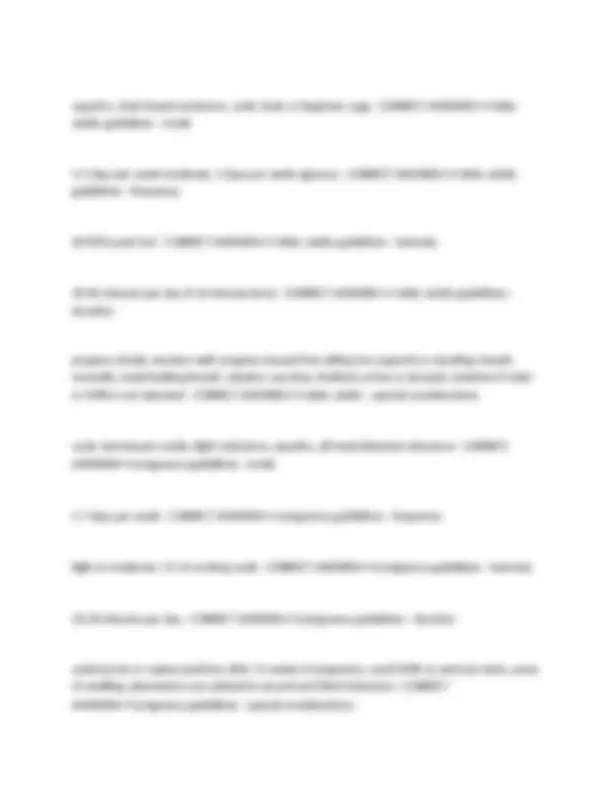
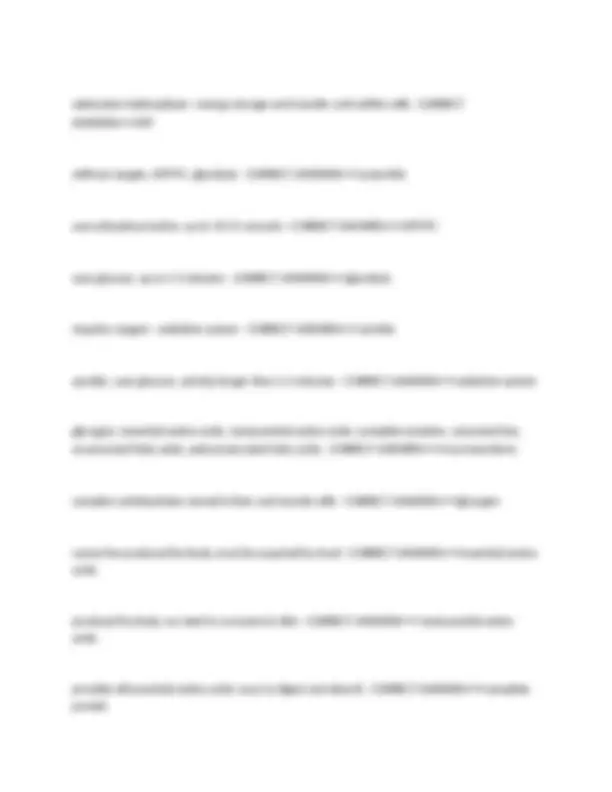
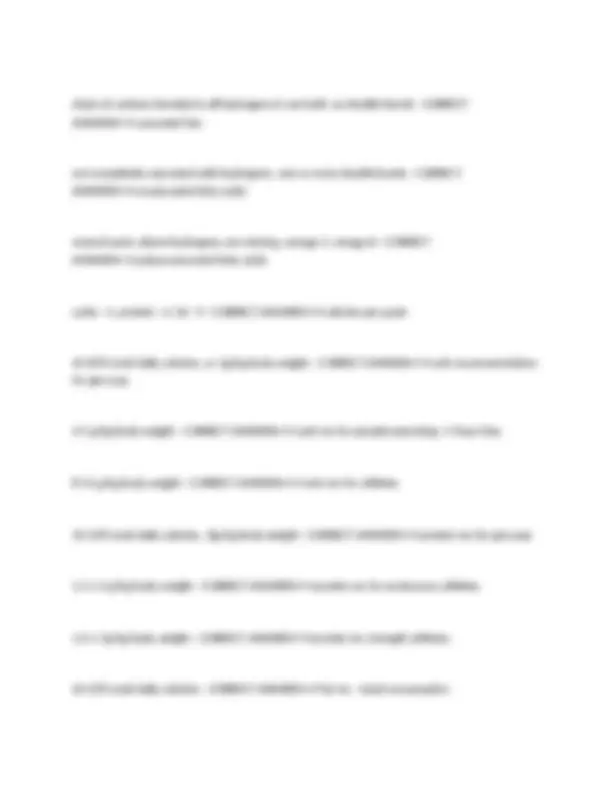
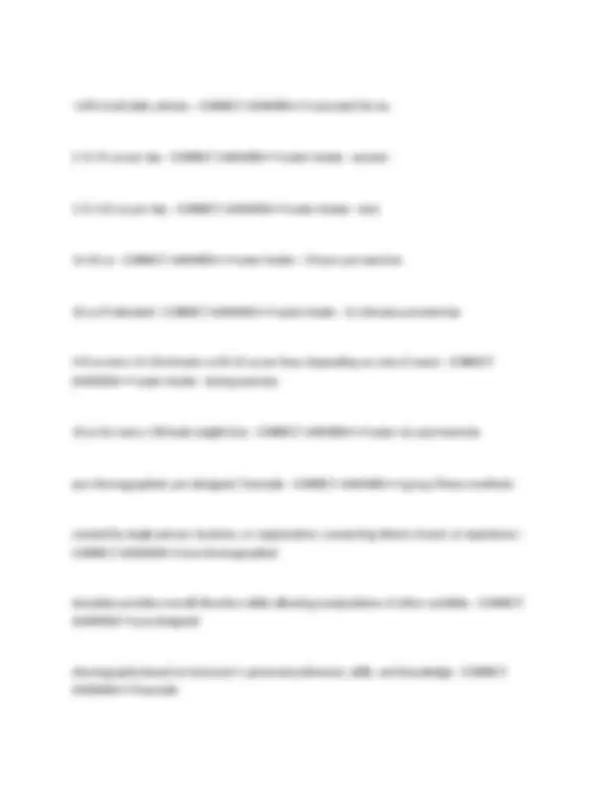
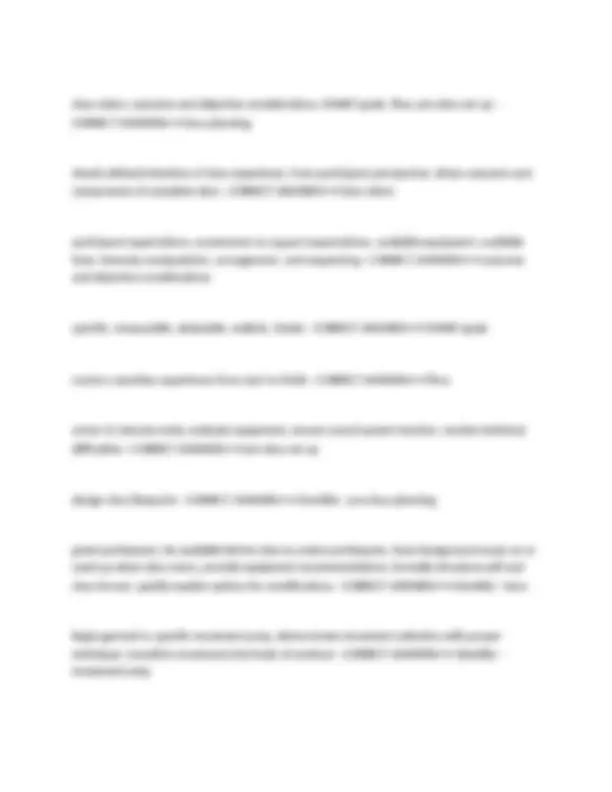
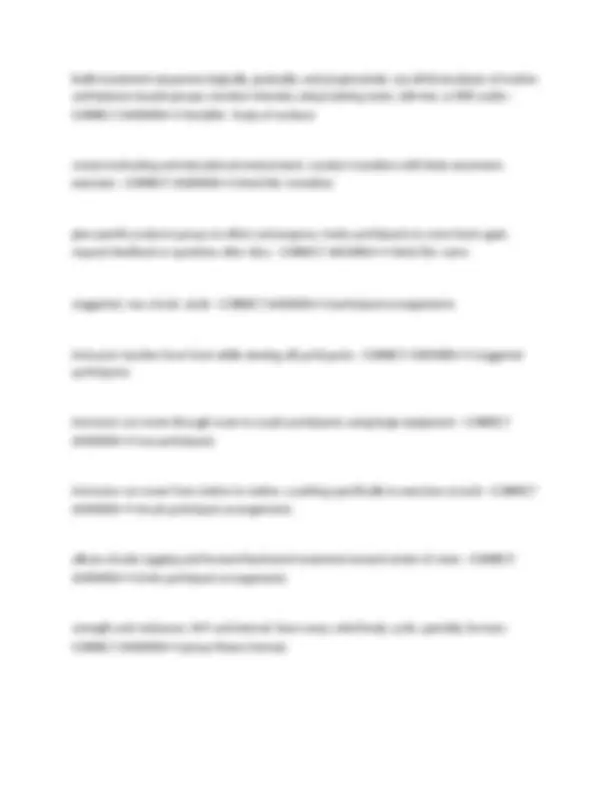
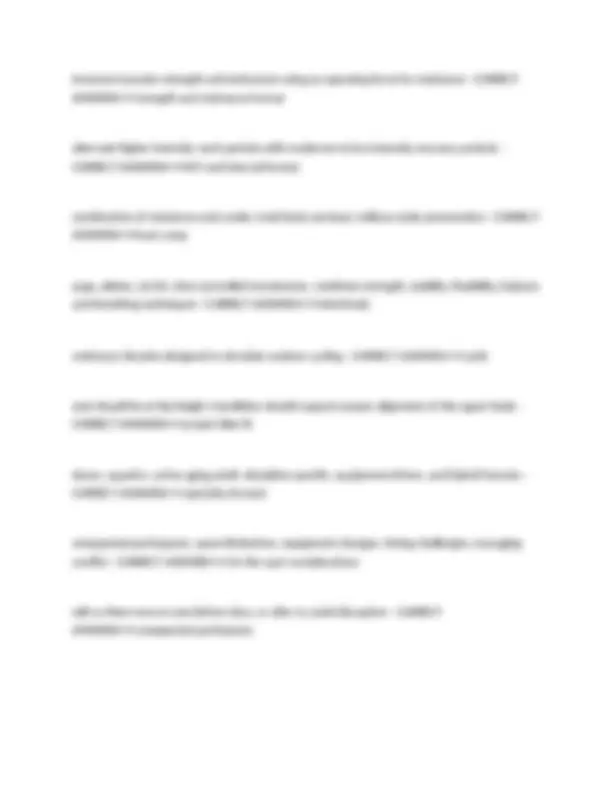
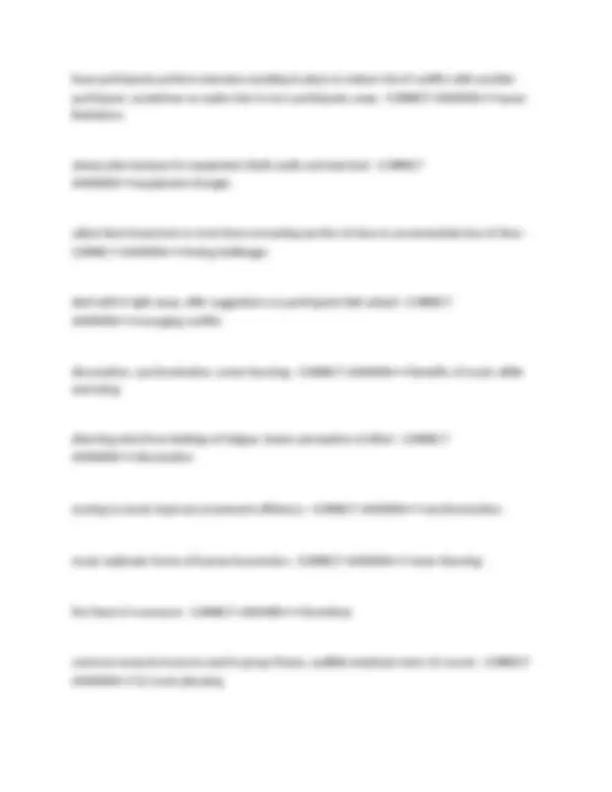
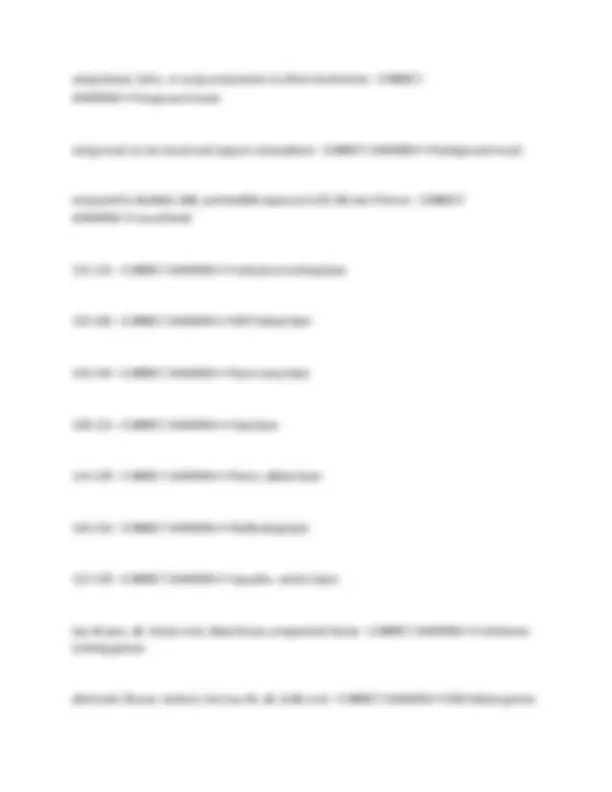
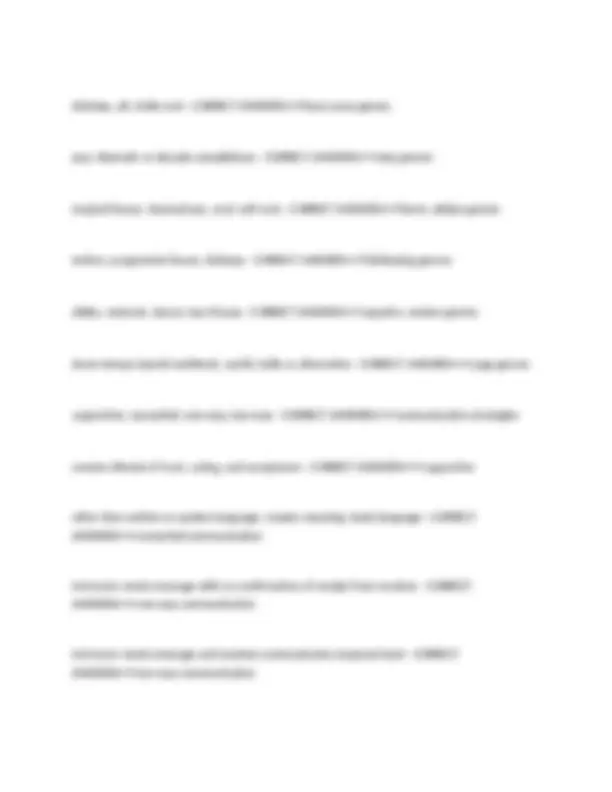
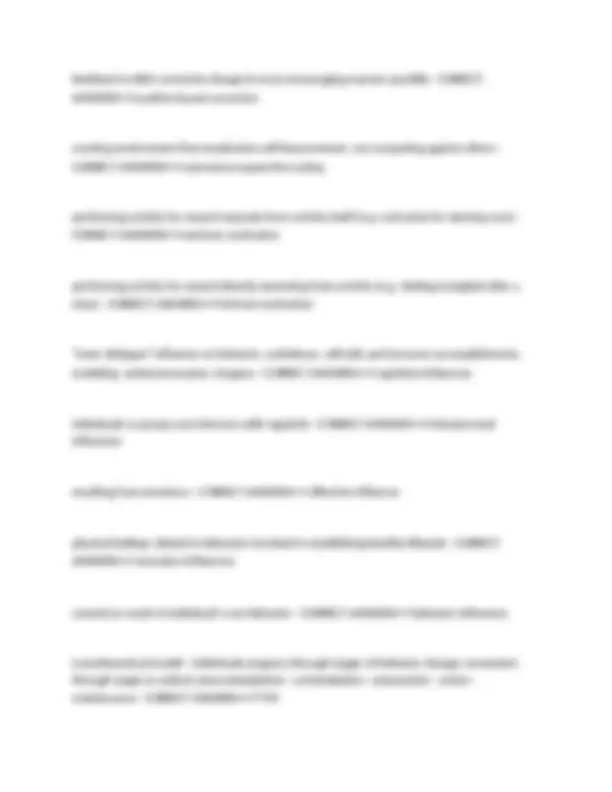
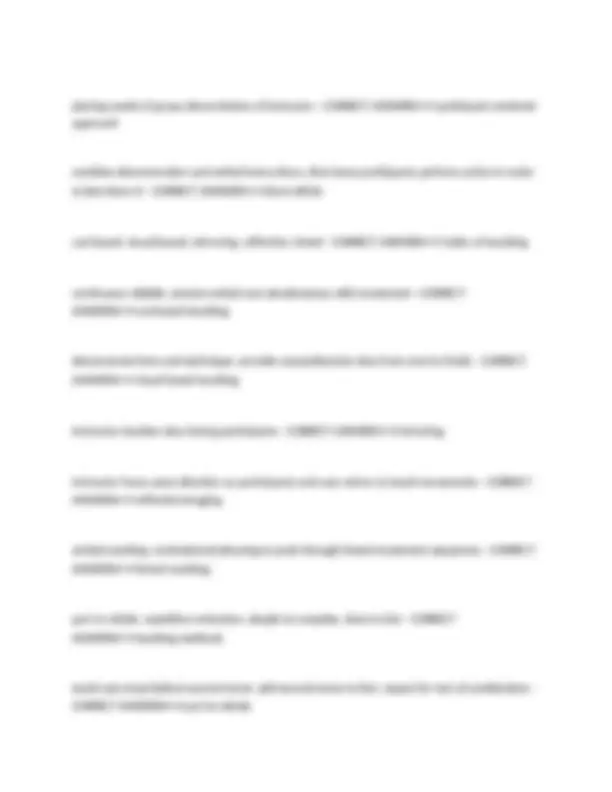
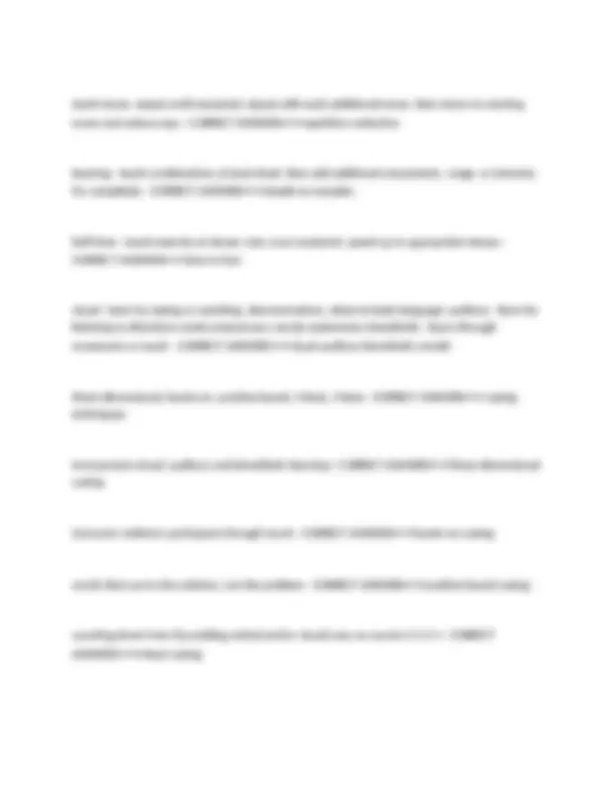
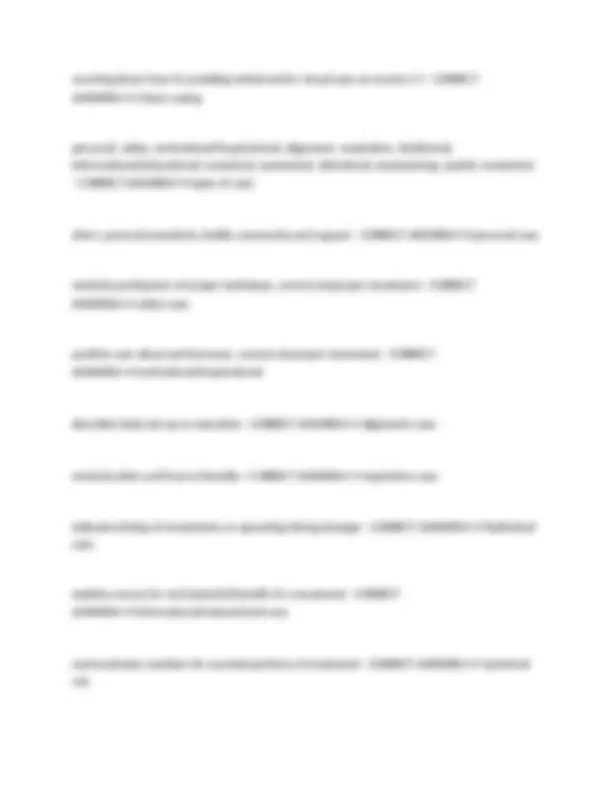
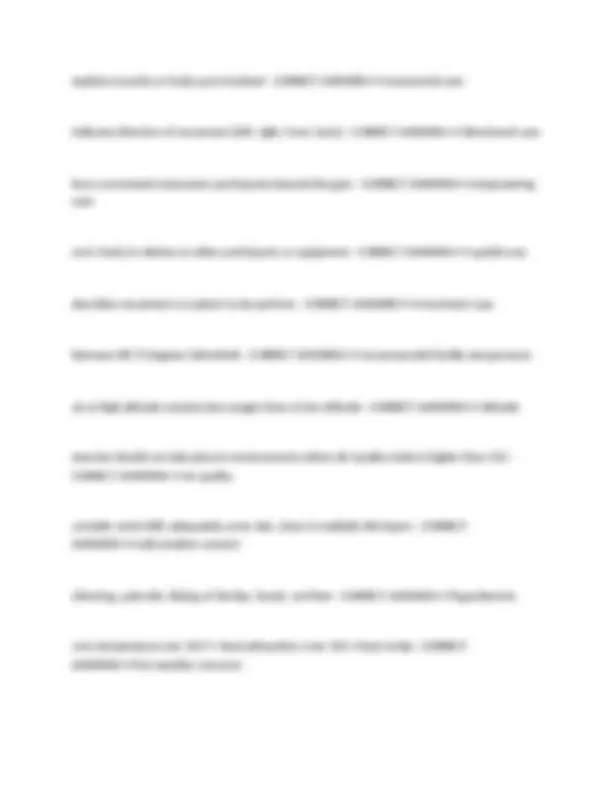
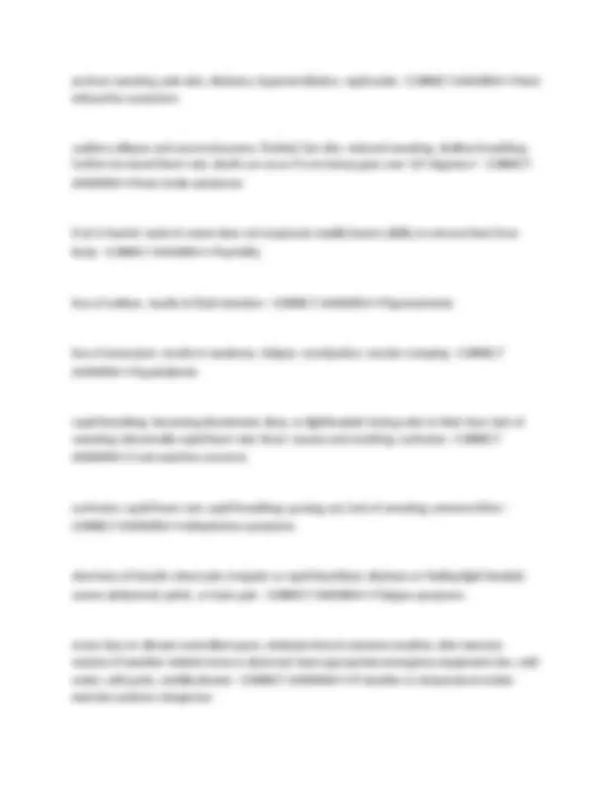
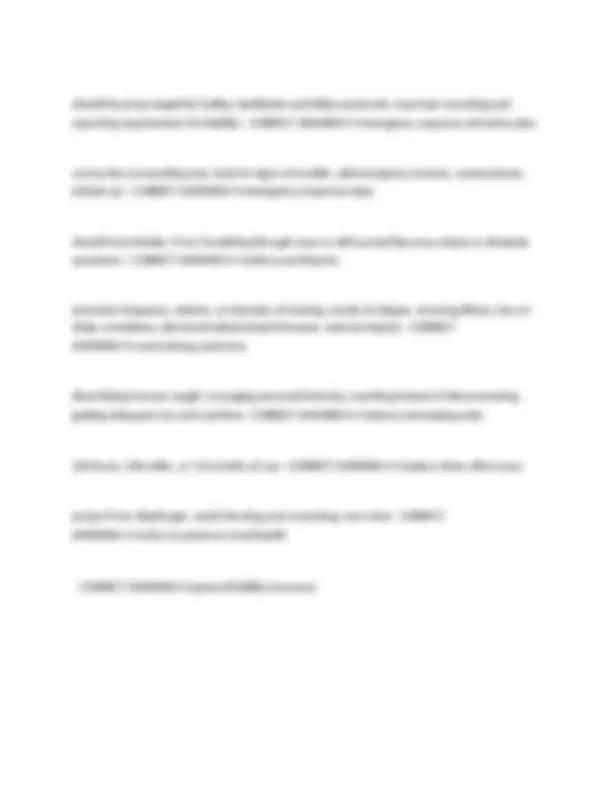


Study with the several resources on Docsity

Earn points by helping other students or get them with a premium plan


Prepare for your exams
Study with the several resources on Docsity

Earn points to download
Earn points by helping other students or get them with a premium plan
Community
Ask the community for help and clear up your study doubts
Discover the best universities in your country according to Docsity users
Free resources
Download our free guides on studying techniques, anxiety management strategies, and thesis advice from Docsity tutors
AFAA GROUP FITNESS INSTRUCTOR EXAM 2025 WITH 100% ACCURATE ANSWERS
Typology: Exams
1 / 43

This page cannot be seen from the preview
Don't miss anything!




































Interrelation of nervous, muscular, and skeletal systems to create movement - CORRECT ANSWER✔✔Kinetic chain brain and spinal cord, coordinates activity of body parts - CORRECT ANSWER✔✔Central nervous system all nerves branching off spinal cord, extending out to the body - CORRECT ANSWER✔✔Peripheral nervous system sense distortion in body tissues - CORRECT ANSWER✔✔mechanoreceptors mechanoreceptor that senses changes in tension - CORRECT ANSWER✔✔Golgi tendon organs mechanoreceptor that senses changes in length - CORRECT ANSWER✔✔muscle spindles cumulative sensory input to the CNS from all mechanoreceptors - CORRECT ANSWER✔✔proprioception connect muscle to bone, anchor to produce force, limited blood flow, slow to repair - CORRECT ANSWER✔✔tendons
individual contractile units, actin and myosin filaments - CORRECT ANSWER✔✔sarcomeres slow twitch - more aerobic, slower to reach maximal contraction, resistant to fatigue - CORRECT ANSWER✔✔type I muscles more anaerobic, produce more speed and strength, faster to fatigue - CORRECT ANSWER✔✔type ii muscles extensibility, elasticity, irritability, ability to develop tension - CORRECT ANSWER✔✔behavioral properties of muscles stabilization muscles - core - CORRECT ANSWER✔✔transverse abdominus stabilization - core - CORRECT ANSWER✔✔multifidus stabilization - core - CORRECT ANSWER✔✔internal obliques stabilization - core - CORRECT ANSWER✔✔diaphragm stabilization - core - CORRECT ANSWER✔✔pelvic floor muscles stabilization - core - CORRECT ANSWER✔✔external obliques stabilization - core - CORRECT ANSWER✔✔quadrates lumborum stabilization - core - CORRECT ANSWER✔✔psoas major
movement - core - CORRECT ANSWER✔✔erector spine rectus femoris, vastus lateralis, medialis, and intermedius; knee extension; squat - CORRECT ANSWER✔✔quadriceps: parts, function, and exercise semitendinosus, semaimembranosous, biceps femoris; knee flexion, hamstrings curl - CORRECT ANSWER✔✔hamstrings: parts, function, and exercise plantar flexion, calf raise - CORRECT ANSWER✔✔gastrocnemius: function and exercise hip extension and external rotation, lunge (upward phase) - CORRECT ANSWER✔✔gluteus maximus: function and exercise spinal flexion, lateral flexion, and rotation; ball crunch - CORRECT ANSWER✔✔rectus abdominis: function and exercise shoulder flexion and horizontal adduction; push up - CORRECT ANSWER✔✔pectoralis major: function and exercise shoulder extension, adduction, and internal rotation; band row - CORRECT ANSWER✔✔latissimus dorsi: function and exercise elbow flexion, biceps curl - CORRECT ANSWER✔✔biceps: function and exercise elbow extension; triceps extension - CORRECT ANSWER✔✔triceps: function and exercise connect bone to bone, limited blood flow, slow to repair - CORRECT ANSWER✔✔ligaments
skull, rib cage, and vertebral column - CORRECT ANSWER✔✔axial skeleton bones of upper and lower extremities - CORRECT ANSWER✔✔appendicular skeleton movement, support, protection, blood production, mineral storage - CORRECT ANSWER✔✔skeletal system functions no joint cavity or connective tissue, little to no movement (e.g., sutures of the skull) - CORRECT ANSWER✔✔non-synovial joint produces synovial fluid, has joint cavity and connective tissue (gliding, condyloid, hinge, saddle, pivot, ball-and-socket) - CORRECT ANSWER✔✔synovial joint synovial; no axis of rotation, slides side-to-side, back and forth (e.g., carpals of the hand) - CORRECT ANSWER✔✔gliding joint synovial; condyles of one bone fit elliptical cavities of another, one plane of motion (e.g., knee) - CORRECT ANSWER✔✔condyloid joint synovial; uniaxial; one plane of motion (e.g., elbow) - CORRECT ANSWER✔✔hinge joint synovial; one bone fits like a saddle on another; two planes of motion (sagittal, frontal) (thumbs are only ones in body) - CORRECT ANSWER✔✔saddle joint synovial; one axis, transverse plane movement (e.g., radioulnar) - CORRECT ANSWER✔✔pivot joint
SA - located in right atrium; receives signal to contract (pacemaker for the heart) - CORRECT ANSWER✔✔sinotrial node transport blood away from heart - CORRECT ANSWER✔✔arteries transport blood back to heart - CORRECT ANSWER✔✔veins amount of blood pumped with each contraction - CORRECT ANSWER✔✔stroke volume rate at which the heart pumps, average = 70-80 bpm - CORRECT ANSWER✔✔heart rate transportation, regulation, protection - CORRECT ANSWER✔✔functions of blood components that move air in and out of body - CORRECT ANSWER✔✔respiratory pump bones, muscles: inspiration, muscles: expiration - CORRECT ANSWER✔✔structures of the respiratory pump sternum, ribs, vertebrae - CORRECT ANSWER✔✔bones of respiratory pump diaphragm, external intercostals, scalenes, sternocleidomastoid, pectoralis major - CORRECT ANSWER✔✔inspiration muscles internal intercostals, abdominals - CORRECT ANSWER✔✔Expiration muscles Front of body - CORRECT ANSWER✔✔Anterior
back of body - CORRECT ANSWER✔✔Posterior above point of reference - CORRECT ANSWER✔✔Superior below point of reference - CORRECT ANSWER✔✔inferior nearest to point of reference - CORRECT ANSWER✔✔proximal farthest from point of reference - CORRECT ANSWER✔✔distal closer to midline - CORRECT ANSWER✔✔medial farther from midline - CORRECT ANSWER✔✔lateral divides body into left and right halves, forward-backward movement - CORRECT ANSWER✔✔sagittal plane sagittal: bending of joints, decreases relative angle - CORRECT ANSWER✔✔flexion sagittal: straightening of joints, increases relative angle - CORRECT ANSWER✔✔extension sagittal: extension at ankle - CORRECT ANSWER✔✔plantar flexion flexion at ankle - CORRECT ANSWER✔✔dorsiflexion
transverse: outward rotation of limbs - CORRECT ANSWER✔✔external rotation eversion, dorsiflexion, and abduction of feet - CORRECT ANSWER✔✔pronation inversion, plantar flexion, and adduction of feet - CORRECT ANSWER✔✔supination trunk rotation, bicycle crunches, lunge with rotation - CORRECT ANSWER✔✔example transverse exercises length at which muscle can create most tension; too short or too long = reduced force production - CORRECT ANSWER✔✔length-tension relationship muscles moving together to produce movement - CORRECT ANSWER✔✔force-couple agonist contracts while antagonist relaxes to allow movement - CORRECT ANSWER✔✔reciprocal inhibition how the body responds and adapts to stress: alarm, adaptation, and exhaustion - CORRECT ANSWER✔✔general adaptation syndrome part of general adaption syndrome: initial response to exercise; 2-3 weeks - CORRECT ANSWER✔✔alarm part of general adaptation syndrome: body adapts to stimuli; progressive improvement; 4- weeks - CORRECT ANSWER✔✔adaptation
part of general adaptation syndrome; body no longer tolerates demands of training; adaptions may halt; overtraining risk increases - CORRECT ANSWER✔✔exhaustion SAID/principle of specificity: type of stimulus placed on body determines expected physiological outcome - CORRECT ANSWER✔✔specific adaptation to imposed demands principle weight and movements placed on body - CORRECT ANSWER✔✔mechanical specificity specific exercises using different speeds - CORRECT ANSWER✔✔neuromuscular specificity energy demand placed on body - CORRECT ANSWER✔✔metabolic specificity to create physiological change, exercise stimuli must be at a greater intensity level than body is used to receiving - CORRECT ANSWER✔✔the overload principle concentric, isometric, eccentric - CORRECT ANSWER✔✔muscle action spectrum produces tension while shortening to overcome external resistance - CORRECT ANSWER✔✔concentric produces tension while maintaining constant length - CORRECT ANSWER✔✔isometric produces tension while lengthening - CORRECT ANSWER✔✔eccentric prime mover; chest press (pectoralis major), row (latissimus dorsi), squat (gluteus Maximus, quadriceps) - CORRECT ANSWER✔✔agonist: function, exercise, muscles used
abnormal rounding of thoracic spine, usually accompanied by rounded shoulders - CORRECT ANSWER✔✔kyphosis sway back, excessive lumbar curve - CORRECT ANSWER✔✔lordosis regularly repeated movement can alter kinetic chain; elements of occupation and recreation - CORRECT ANSWER✔✔repetitive movement frequent immobility, holds potential for repetitive stress injuries - CORRECT ANSWER✔✔repetitive lack of motion muscle is overly tense or tight during movement - CORRECT ANSWER✔✔overactive muscle is weak, not being recruited as it should - CORRECT ANSWER✔✔underactive when overactive muscle decreases neural drive to functional antagonist - CORRECT ANSWER✔✔altered reciprocal inhibition common postural malalignments and muscle imbalances individuals develop based on variety of factors - pronation distortion syndrome, lower crossed syndrome, upper crossed syndrome - CORRECT ANSWER✔✔postural distortion patterns foot pronation (flat feet), adducted, internally rotated knees (knock knees) - CORRECT ANSWER✔✔pronation distortion syndrome anterior tilt to pelvis (arched lower back) - CORRECT ANSWER✔✔lower crossed syndrome
forward head, rounded shoulders - CORRECT ANSWER✔✔upper crossed syndrome soles, lateral gastrocnemius, peroneals - CORRECT ANSWER✔✔Overactive foot muscles biceps femoris (short head), tensor fascia latae (TFL) - CORRECT ANSWER✔✔overactive knee muscles hip flexors (TFL, quadriceps, psoas), adductors, abdominals (rectus abdominis, external obliques) - CORRECT ANSWER✔✔overactive LPHC muscles latissimus dorsi, pectorals major/minor - CORRECT ANSWER✔✔overactive shoulder muscles upper trapezius, sternocleidom Astrid, levator scapulae - CORRECT ANSWER✔✔overactive head/neck muscles medial gastrocnemius, anterior tibialis, posterior tibialis - CORRECT ANSWER✔✔underactive feet muscles vastus medialis oblique (VMO) - CORRECT ANSWER✔✔underactive knee muscles gluteus maximus, gluteus medius, hamstrings, intrinsic core stabilizers - CORRECT ANSWER✔✔underactive lphc muscles middle and lower trapezius, rhomboids, rotator cuff - CORRECT ANSWER✔✔underactive shoulder muscles
proprioceptively enriched environment, dynamic balance - CORRECT ANSWER✔✔balance training concepts unstable, yet controlled - CORRECT ANSWER✔✔proprioceptively enriched environment maintain equilibrium through intended path of motion when external forces are present - CORRECT ANSWER✔✔dynamic balance plyometric training, rate of force production - CORRECT ANSWER✔✔plyometric training concepts quick, powerful movements; eccentric contraction followed by explosive concentric contraction
1 - 65-75% HRmax, 2 -76-85% Hrmax, 3 - 86-90% HRmax - CORRECT ANSWER✔✔cardio training zones alternates between intense exertion and rest or lighter exertion - CORRECT ANSWER✔✔interval training stabilization, endurance, strength, hypertrophy, power - CORRECT ANSWER✔✔resistance training adaptations remain stable and balanced over center of gravity in a changing environment - CORRECT ANSWER✔✔stabilization muscles fire over prolonged periods of time - CORRECT ANSWER✔✔endurance neuromuscular system provides internal tension and exerts force against external resistance - CORRECT ANSWER✔✔strength skeletal muscle fiber enlargement - CORRECT ANSWER✔✔hypertrophy ability to produce large amount of force in short amount of time - CORRECT ANSWER✔✔power periodization, training intensity, training volume - CORRECT ANSWER✔✔acute variables division of training program into smaller, progressive stages - CORRECT ANSWER✔✔periodization
8-10 reps, 2-3 sets, medium tempo, 0-60 seconds rest - CORRECT ANSWER✔✔core in strength- based strength or muscular development classes 8-12 reps, 2-3 sets, medium tempo, 0-60 seconds rest - CORRECT ANSWER✔✔balance in strength-based strength and muscular development classes 6-12 reps, 3-5 sets, medium tempo, 75-85% 1RM, 0-60 seconds rest - CORRECT ANSWER✔✔resistance in strength-based strength or muscular development classes strength and resistance, hiit and intervals, boot camp, yoga, cycle - CORRECT ANSWER✔✔class formats kneeling hip flexor stretch, lat stretch, floor planks, floor bridge, single-leg squats - CORRECT ANSWER✔✔strength and resistance movement prep squat to overhead press, push-ups, bent over rows, biceps curls, lunge variations - CORRECT ANSWER✔✔strength and resistance body of workout static stretch calves and adductors, abdominal crunches, push-ups, walking lunges, squat jump to stabilization - CORRECT ANSWER✔✔HIIT and interval movement prep jogging, burpees, shuffles, repetitive squat jumps - CORRECT ANSWER✔✔HIIT and interval body of workout abdominal crunches, push-ups, walking lunges, prisoner squats - CORRECT ANSWER✔✔boot camp movement prep
jogging, burpees, shuffles, repetitive squat jumps with aggressive team-oriented approach - CORRECT ANSWER✔✔boot camp body of workout child's pose, cat/cow flow, spinal balance, chair pose - CORRECT ANSWER✔✔yoga movement prep sun salutation a, warrior 1, 2, 3, mountain pose to goddess pose, plank flow - CORRECT ANSWER✔✔yoga body of workout avoid undue fatigue in the legs or prematurely spiking heart rate - CORRECT ANSWER✔✔cycle movement prep seated or standing flats, seated or standing climbs, sprints, attacks, jumps - CORRECT ANSWER✔✔cycle body of workout foundational -- advanced - CORRECT ANSWER✔✔proprioceptive progression continuum floor, sport beam, half foam roll, foam pad, balance disc, wobble board, bosu ball - CORRECT ANSWER✔✔proprioceptive progression - base of support two leg stable, staggered stance stable, single leg stable, two leg unstable, staggered stance unstable, single leg unstable - CORRECT ANSWER✔✔proprioceptive progression - lower body two arm, alternating arms, single arm, single arm with trunk rotation - CORRECT ANSWER✔✔proprioceptive progression - upper arm foam rollers, rolling sticks, massage balls - CORRECT ANSWER✔✔smr modalities